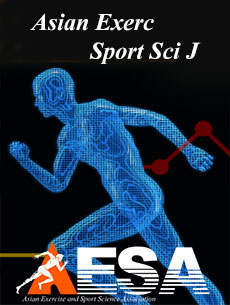The The effect of kinesiology taping on range of motion, muscle strength and arm swing.
Keywords:
kinesiology tape, wrist, isometric muscle strength, motion, runningAbstract
The purpose of this study was to examine the effects of tape on the wrist joint as well as on wrist range of motion, shoulder and wrist muscle strength, and arm swing. The participants were 31 healthy male university students. All participants were examined with 2 conditions: with tape applied around the bilateral distal forearms (taped) and without tape as a control (non-taped). Under these two conditions, the following actions were recorded or performed: the range of joint motion of the wrist in palmar flexion and dorsiflexion, isometric muscle strength in shoulder flexion and extension, and in palmar flexion and dorsiflexion. Video recording during arm swing was also carried out. As the result, joint range of motion was significantly lower taped than non-taped in passive wrist joint palmar flexion (p < 0.05). Isometric muscle strength was not significantly different between taped and non-taped in shoulder flexion-extension and wrist flexion-dorsiflexion. The movement velocity of the lateral epicondyle of the humerus was significantly higher taped than non-taped (p < 0.01). It was suggested that the application of tape to the wrist joint may increase the speed of arm swing, although the influence on joint range of motion and muscle strength is minimal.
Downloads


















